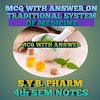T.Y B. PHARM SEM - V
PHARMACOGNOSY & PHYTOCHEMISTRY – II
EXPERIMENT NO: 08
AIM: To study Thin Layer Chromatography (TLC) pattern of isolated Caffeine.
REFERENCE:
1. Dr. Anup K. Chakraborty, Sushma M. Rathod. “Practical in pharmacognosy & phytochemistry – II. Edition 2019, published by S. Vikas & company (Medical publisher), Page no. 36, 50, 51
REQUIREMENTS:
Apparatus: TLC
plates, Glass chamber, Iodine chamber, Hot air oven, Beaker, Capillary etc.
Chemical: Isolated caffeine, Chloroform, Ethyl acetate, Methanol, Acetic acid
INTRODUCTION:
Thin
layer chromatography (TLC) is mainly used qualitatively for screening of
different plant extracts which serve as a very important tool in the
phytochemical studies.
Preparation of TLC
plate: The glass plates of sizes like 20x20; 20x10; 20x5
cm are used for TLC study. The adsorbents like silica gel or alumina used as a
stationary phase. Water is used as a solvent for preparation of slurry.
Techniques used for preparation of TLC plates are pouring, dipping or spreading.
The prepared TLC plates are air dried and activated in oven at 105°C for 30
min.
Application of samples:
Standard borosil glass capillaries are used for applying samples on TLC plates.
The spots are applied at suitable distance and allowed to dry.
Preparation of
saturated chamber: The TLC plate is placed vertically in a
rectangular chromatography tank or chamber. Selection of solvent system depends
upon the nature of the phytoconstituent. Saturation of chamber has been done so
as to avoid the unequal solvent evaporation losses from developed plate which
leads to various types of random behavior and edge effects. The solvent level
should be kept below the spots. Generally ascending method is used.
Location of spots:
Physical methods include the UV, fluorescence, colour or radioactive counting.
In case of chemical methods, locating agents are applied by spraying. Various
spraying agents are used such as Iodine, 1% vanillin in sulphuric acid, 50%
methanol in sulphuric acid. Total number of spots, their colour, intensity,
size and shape observed.
Rf Value:
The Rf value is calculated by using below formula.
PROCEDURE:
Preparation of extract:
Dissolved 1mg of isolated caffeine in 1ml chloroform or methanol.
Adsorbent (Stationary
Phase): Make 15 g silica gel slurry with 20 ml of distilled
water. The plates are coated with slurry of silica gel to a width of 0.4mm,
allowed to dry at room temperature, activated oven at 120°C for 20 min.
Solvent system (Mobile
Phase): The solvent system ethyl acetate-methanol-acetic
acid (8:1:1). is poured in the TLC chamber to a depth of 3cm and allow to
saturate. The chamber is lined with filter paper on three sides to maintain
equilibrium of mobile phase
Application of spots:
The above sample applied as two spot on each plate with the help of
Development of
chromatogram: The chromatogram is established by
ascending technique, allowing solvent system to reach a height of 10 cm. The
plates are withdrawn from the chamber, air-dried and visualize the dried TLC
plate by exposure to iodine vapour.
Rf Value:
The Rf value is calculated by using below formula

RESULT: The
TLC of caffeine was performed and the Rf value of caffeine was found to
be…………………….















0 Comments
Please do not enter any spam link in the comment box.